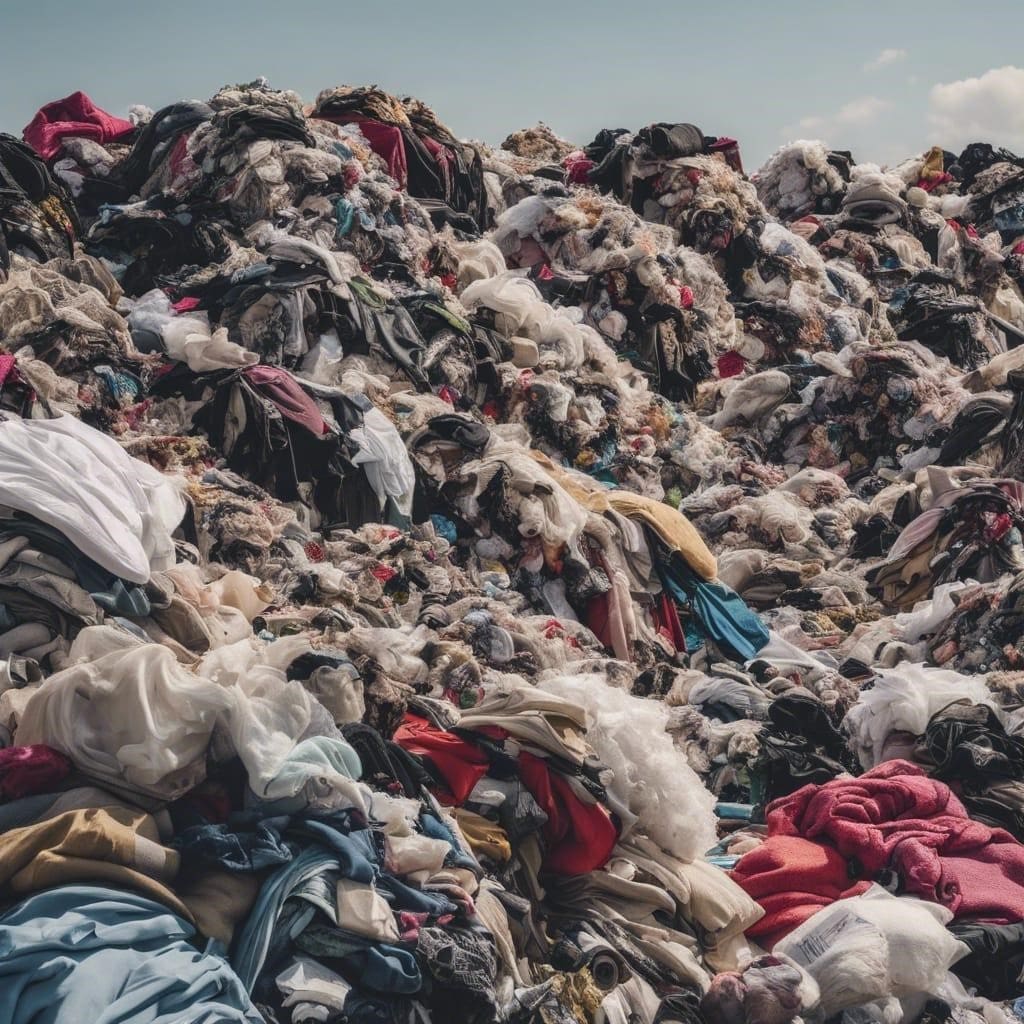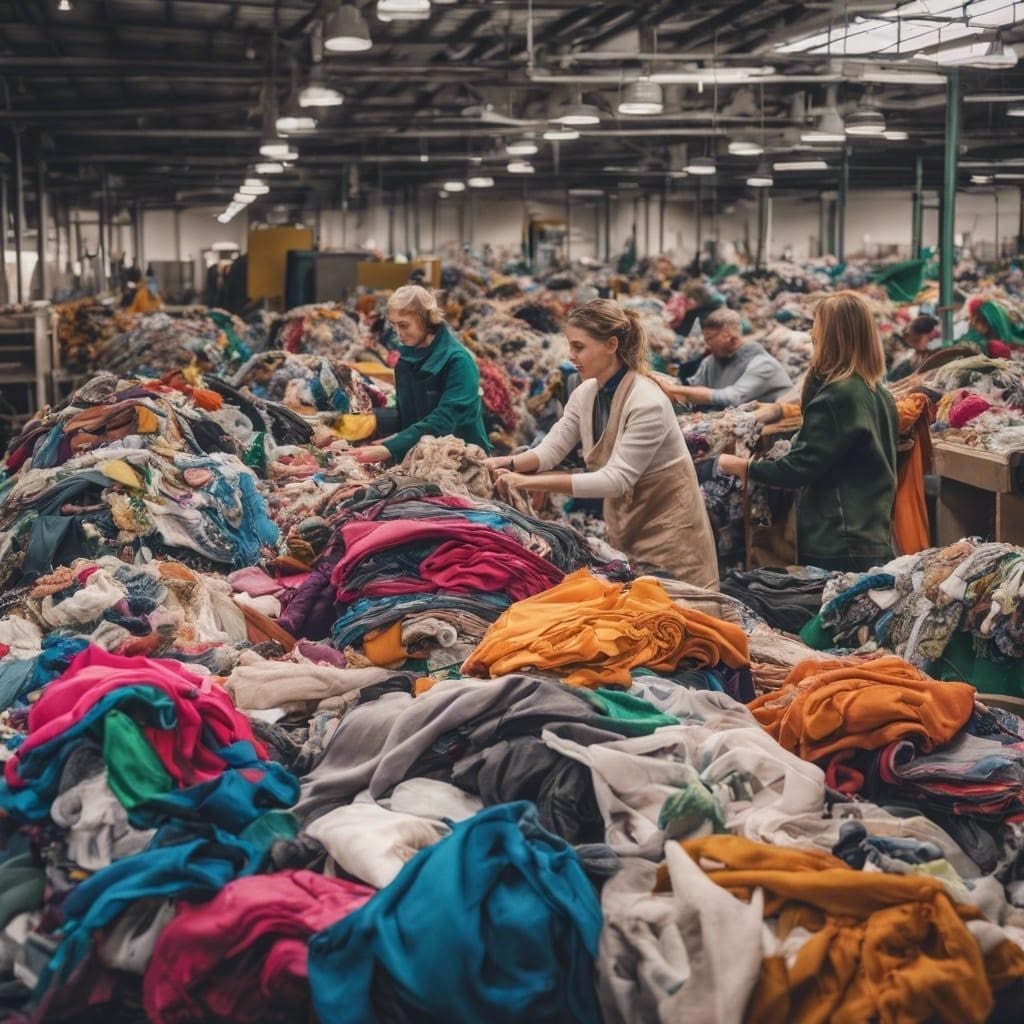Introduction – In the world of fashion, where trends come and go with the seasons, the issue of waste is ever-present. As consumers become more environmentally conscious, the spotlight turns to the industry’s impact on our planet. Textile recycling emerges as a key player in the sustainable fashion movement, offering a pathway to reduce waste and conserve resources. In this article, we’ll explore the importance of textile recycling, its benefits, and how cities like Cambridge and Austin are leading the charge.
Textiles recycling involves the collection, sorting, and processing of discarded textiles to create new products or materials. It aims to divert textiles from landfills and extend their lifecycle through various recycling techniques. By recycling textiles, valuable resources such as water, energy, and raw materials can be conserved, reducing the overall environmental footprint of the fashion industry.
There are several approaches to textiles recycling in the fashion industry. One common method is mechanical recycling, where textiles are sorted by type and color, shredded into fibers, and then spun into yarns for new fabric production. This process is suitable for recycling cotton, polyester, and other synthetic fibers.
Chemical recycling is another method that involves breaking down textile fibers into their chemical components, which can be used to create new fibers or materials. This method is particularly useful for recycling blended fabrics that are challenging to mechanically separate.
Abstract: This study explores the concept of textiles recycling as a means to reduce waste in the fashion industry. The fashion industry is known for its significant environmental impact, including the generation of large amounts of textile waste. Textiles recycling offers a sustainable solution by diverting textiles from landfill and transforming them into new products. This abstract discusses the importance of waste reduction in the fashion industry, the benefits of textiles recycling, and the role of the circular economy in creating a more sustainable fashion system.
 The Need for Textile Recycling
The Need for Textile Recycling
The fashion industry is one of the largest polluters globally, with a vast amount of resources consumed in the production of garments. The lifecycle of a typical piece of clothing often ends at a landfill, contributing to the growing problem of textile waste. Textile recycling offers an alternative, turning old fabrics into new products and significantly reducing the environmental footprint of our clothing choices. In general, recycling textiles tackles the economic, social, and environmental issues related to the textile sector. It is essential to creating a more sustainable and circular economy since it keeps textile waste out of landfills, conserves resources, and lowers pollution.
- A Closer Look at the Problem
Every year, millions of tons of textiles are discarded, with a significant portion ending up in landfills. These textiles can take hundreds of years to decompose, releasing harmful greenhouse gasses in the process. The production of new textiles, on the other hand, requires water, energy, and raw materials. Textile recycling helps to reduce these issues by reprocessing old textiles, thus reducing the need for new resources.
- The Role of Textile Recycling
Textile recycling involves the collection, sorting, and processing of textiles to create new products. This can range from clothing and accessories to industrial materials. By diverting textiles from landfills and transforming them into something useful, recycling helps close the loop in the fashion industry’s life cycle.
Example of some textile recycling businesses working to improve fashion circularity,
- Econyl, a product of Aquafil, is infinitely recyclable regenerated nylon created from recycled nylon waste, including fishing nets, scrap fabric, and industrial plastic. Trash is gathered, cleaned, and shredded, it is then depolymerized to remove nylon, polymerized, and turned into yarn, which is subsequently sold again as textile goods.
Upasana is a fashion and design brand that prioritizes social responsibility and sustainability. They collaborate with regional artists and craftspeople to produce goods made of recycled and organic materials. Upasana repurposes discarded fabrics into inventive designs for their “ReUse” product line.
 Benefits of Textile Recycling
Benefits of Textile Recycling
Textile recycling not only addresses environmental concerns but also offers economic and social benefits. Textile recycling has several advantages, such as lowering waste, conserving resources, lowering pollution, saving energy, creating job opportunities, and assisting with social projects. We may shift from the manufacturing and consumption of textiles to a more ecologically conscious and sustainable model by embracing textile recycling.
- Environmental Impact
Through textile recycling, we can significantly reduce the environmental impact of the fashion industry. It conserves resources, minimizes carbon emissions, and reduces the need for landfill space. Recycled textiles also often require less energy to produce compared to new textiles, contributing to a lower carbon footprint.
- Economic Advantages
Textile recycling can stimulate local economies by creating jobs in the recycling sector. It also presents an opportunity for businesses to innovate and find new uses for recycled materials, potentially leading to growth in the green economy.
- Social Benefits
Recycling programs can support community initiatives, such as providing clothing to those in need or raising funds for local projects. These programs help foster a sense of community and awareness about sustainable practices.
Textile Recycling in Practice
The significance of recycling textiles for cutting waste and conserving resources is becoming more widely recognized. Although methods may differ, initiatives are being undertaken to advance sustainable fashion practices, create recycling technology, and enhance collecting systems. Nonetheless, several areas continue to face difficulties with things like consumer awareness and infrastructural development.
-
Cambridge Textile Recycling
Cambridge, known for its commitment to sustainability, has implemented textile recycling programs aimed at reducing waste. The city provides convenient drop-off locations where residents can recycle their unwanted textiles. This not only helps keep textiles out of landfills but also supports local charities and non-profit organizations.
-
Textile Recycling in Austin
In Austin, the city’s textile recycling efforts are part of a broader zero-waste goal. Austin
provides resources and information on how to recycle textiles, including a directory of local businesses that accept and repurpose used textiles.
-
Textile Recycling in Japan
Japan: Recycling, especially of textiles, is deeply ingrained in Japanese society. The nation supports the idea of mottainai(meaning-Don’t waste what is valuable), which advocates reducing waste. Wearable things are frequently resold in thrift stores, and textiles are acquired through a variety of methods. Japan has developed innovative recycling technology to create new materials from waste textiles.
-
Textile Recycling in United Kingdom
In the UK, local government programs, commercial recycling facilities, and charitable endeavors coexist. Wearable textiles are accepted for resale at thrift stores and collection stations run by charities. Unusable textiles are shipped for recycling or reprocessed into fibers for use in new items.
Overcoming Challenges in Textile Recycling
While the benefits of textile recycling are clear, the path to widespread adoption is riddled with challenges. To tackle these obstacles, a multifaceted strategy incorporating regulatory support, consumer participation, industry collaboration, and technical breakthroughs is needed. Textile recycling may be increased and contribute to a more sustainable and circular economy by working together to achieve these aims.
-
Consumer Awareness and Participation
One of the main obstacles is raising consumer awareness about the importance of textile recycling and encouraging participation. Many people are still unaware of how to recycle their textiles or that such options even exist.
-
Logistics and Infrastructure
Developing the infrastructure for collecting, sorting, and processing textiles can be a complex and costly endeavor. It requires investment, planning, and coordination among various stakeholders.
-
Quality of Recycled Textiles
Maintaining the quality of recycled textiles is crucial for their reuse. Mixed or contaminated materials can reduce the quality of the recycled product, making it less desirable or usable.
How we Can Contribute
As a consumer, we play a vital role in the success of textile recycling. Here are some ways we can contribute:
-
Educate Ourself and Others
Learn about textile recycling and share this knowledge with friends and family. The more people understand the benefits, the more likely they are to participate.
-
Recycle our Textiles
Make an effort to recycle our textiles rather than throwing them away. Look for local recycling programs or businesses that accept used textiles.
-
Support Sustainable Fashion
Consider purchasing clothing from brands that prioritize sustainability, use recycled materials, or have take-back programs for their products.
-
Upcycle and Repurpose
We can be creative and find ways to upcycle or repurpose old textile. For example, like turning worn out garments into cleaning rags, tote bags, or home decore items.
-
Donate Responsibly
When donating clothing, ensure that they are clean and in good condition. This helps increase the likelihood of them being reused or recycled. This extends the lifespan of textile and reduces the demand for the new production.
The Future of Textile Recycling
The future of textile recycling looks promising, with technological advancements and increased consumer demand for sustainable products driving innovation. As more cities and businesses adopt textile recycling practices, we can expect to see a greater impact on reducing waste in the fashion industry.
-
Innovations in Textile Recycling
Emerging technologies are making it easier to recycle textiles, including advanced sorting systems and new methods for breaking down fabrics. These innovations will likely improve the efficiency and effectiveness of textile recycling processes.
-
The Role of Policy and Regulation
Governments can support textile recycling by implementing policies that encourage or mandate recycling practices. Regulations that promote responsible production and disposal of textiles can further strengthen the recycling ecosystem.
-
Collaboration and Partnerships
The collective effort of consumers, businesses, and governments is necessary for the widespread adoption of textile recycling. Collaborations across the industry can lead to shared knowledge, resources, and a unified approach to reducing waste.
Conclusion
Textile recycling is a crucial step towards a more sustainable fashion industry. By reducing waste, conserving resources, and fostering economic and social benefits, it presents an opportunity for cities, businesses, and consumers to make a positive impact. As initiatives like those in Cambridge and Austin gain momentum, they inspire others to take action. Together, we can work towards a future where the lifecycle of our clothing is circular rather than linear, and where the fashion industry is synonymous with sustainability.
With the right commitment and collaboration, textile recycling can transform the fashion industry and help preserve our planet for future generations. It is not just a trend; it is a necessity that we must embrace now.
References
Collective, C. F. (2022, May 2). 14 Textile Recycling companies pushing for circularity in fashion | Conscious Fashion Collective. Conscious Fashion Collective. https://consciousfashion.co/guides/textile-recycling-companies#:~:text=Vivify%20Textiles%20is%20a%20textile,%2C%20Organic%2C%20and%20Natural%20fibers
Fashinza. (n.d.). Manufacturing platform for apparel industry | Fast & Sustainable – Fashinza. https://fashinza.com/brands-and-retail/tips/what-is-fast-fashion-waste-how-can-your-brand-reduce-waste-generation/
Marsh, J. (2021, December 21). How can the fashion industry reduce textile waste? Earth.Org. https://earth.org/how-can-the-fashion-industry-reduce-textile-waste/
Communications, M. (2024, January 11). Textile Recycling: a sustainable revolution in the fashion industry. https://www.linkedin.com/pulse/textile-recycling-sustainable-revolution-fashion-industry-dfngc?utm_source=share&utm_medium=member_android&utm_campaign=share_via
Srauturier. (2024, February 2). Everything you need to know about waste in the fashion industry – Good on you. Good on You. https://goodonyou.eco/waste-luxury-fashion/
Recycling in fashion: Can it solve its environmental problems? | Sustainable Fashion Blog| Project CECE. (2023, June 7). https://www.projectcece.com/blog/586/recycling-in-fashion/
Here’s how textile recycling can create jobs and reduce pollution. (2023, August 17). World Economic Forum. https://www.weforum.org/agenda/2023/08/textile-recycling-create-jobs-reduce-pollution/

